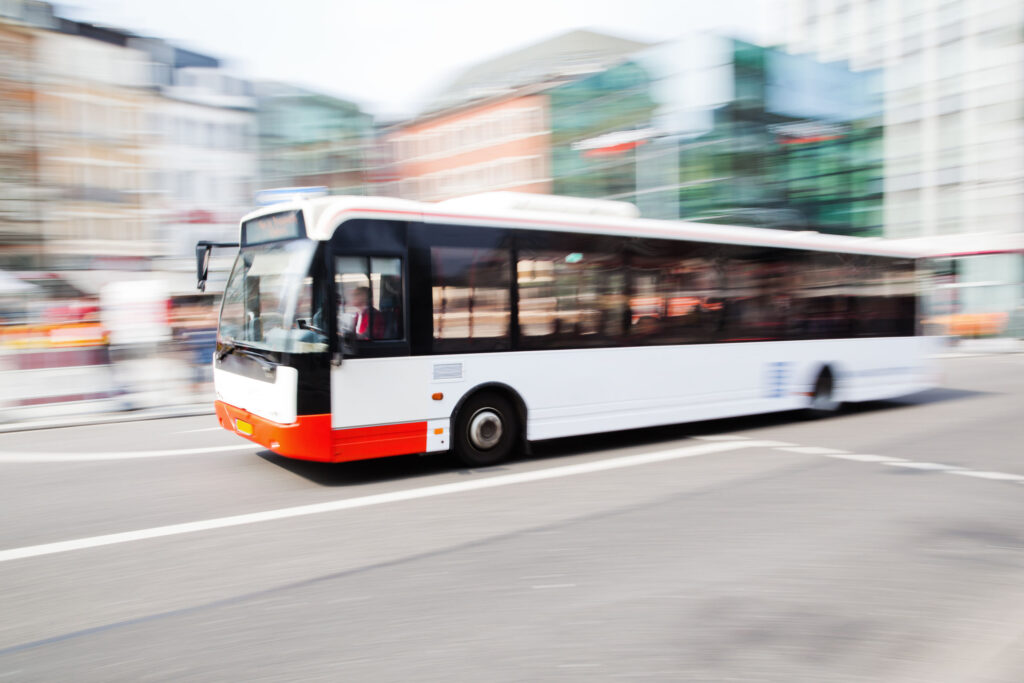
It’s been less than two months since New Mexico debuted Albuquerque Rapid Transit (ART), an initiative years in the making intended to revitalize the city’s public transit system. Yet since November 30, there have already been at least 11 traffic accidents involving the new buses, raising concerns for public safety.
What Is the Albuquerque Rapid Transit Project?
The Albuquerque Rapid Transit Project (ART) is a public transportation plan originally introduced in 2012. In the previous few years, ABQ Ride (the city’s transportation organization) noted a major upswing in public transit usage by residents and visitors alike—more than one million people used Albuquerque public transit in January 2012 alone.
The focus of the project was primarily on Albuquerque’s Central Avenue, a decades-old road that was once part of Route 66. The city’s vision for ART included an electric bus fleet with multiple boarding doors and an electronic payment system to help passengers board the bus more quickly and efficiently. In addition, ABQ Ride hoped to eliminate the need for bus schedules in the hope that ART would have buses available every few minutes to riders.
City officials also believed that the new transit system would make Central Avenue safer for pedestrians and bicyclists, cut down on overall commute times, and revitalize business in the downtown corridor.
Albuquerque Rapid Transit Problems and Setbacks
The Albuquerque Rapid Transit project has been plagued with problems and delays since work on the project first began. Originally, the lofty proposal included a budget of $135 million for state-of-the-art electric buses. Part of the funding for the project came from a grant issued by the Federal Transportation Administration in 2014.
ABQ Ride contracted Build Your Dreams (BYD), an automotive company based in China, to manufacture a fleet of 18 electric buses in 2016. But by the time the first bus arrived in Albuquerque in 2017, it was clear that the project was nowhere near completion.
The buses, after making a brief debut, had to be pulled due to major design, implementation, and safety issues. The electric buses could not keep their charge long enough to make it through a full day of commuting as BYD had advertised. In addition, the charging system provided for the vehicles’ batteries was inoperable, essentially shutting down the entire ART project overnight.
The city of Albuquerque later sued BYD for the defective buses, with ensuing legal battles continuing well into 2019 and costing the city over $100,000 in legal fees. The project itself also faced increasing backlash from local business owners on Central Avenue who have blamed ART construction for reduced business and increased rent in the area.
Saving the ART Project
Despite massive setbacks and a lawsuit that ended without the city receiving financial compensation, ABQ Ride remained determined to complete the ART project— albeit with modified goals in mind. In December 2018, the city contracted New Flyer of America to provide a fleet of 20 clean-diesel buses.
The decision to purchase diesel buses instead of the originally proposed electric fleet ultimately saved the project, although it added nearly a year to its completion. Finally, on November 30, 2019, the Albuquerque Rapid Transit system made its debut with two routes and offered free rides to the public through January 1, 2020.
How Does Albuquerque Rapid Transit Work?
ART buses drive in a dedicated bus-only lane, while raised platform stations up and down Central Avenue make boarding more accessible for wheelchairs, walkers, and strollers. Each 60-foot bus from New Flyer has the capacity to hold up to 132 passengers and is equipped with five boarding doors for increased boarding speed. Passengers may purchase tickets using the ABQ Ridetix app or at vending machines located at each bus station.
Stations along Central Avenue are roughly half a mile apart and most of the platform stations are located in the middle of the street, with average wait times between 7 and 15 minutes between buses.
Is Albuquerque Rapid Transit Safe?
Despite overcoming major obstacles to making Albuquerque Rapid Transit a reality, safety concerns over the new ART buses have been on the rise since the buses were deployed less than two months ago.
Albuquerque Rapid Transit Accidents
Since November 30, there have been at least 11 accidents involving ART buses and passenger vehicles on Central Avenue. An Albuquerque bus crash on December 18 sent one ART passenger to the hospital after a truck made an illegal left turn and smashed into the bus.
Another Albuquerque bus crash occurred on Christmas Eve, when a local police officer’s vehicle was sideswiped by an ART bus while he was on patrol.
In yet another accident, the son of a retired city planner who once called the bus line “one of the worst planning mistakes the city had ever made” was involved in a left-turn crash with an ART bus that resulted in facial lacerations that will likely leave permanent scarring.
Although city and ABQ Ride officials maintain that the majority of the accidents have resulted because of errors made by passenger vehicle drivers, commuters have found the new bus-only lanes to be a confusing and inconvenient adjustment. Lawmakers have since said they are looking into installing curbs and permanent barriers along the Central Avenue ART routes to help prevent future accidents.
Pending Litigation Against Albuquerque Rapid Transit
A lawsuit filed last November against the city of Albuquerque by a former traffic engineer who worked on the Albuquerque Rapid Transit project alleges that he was fired for voicing concerns over the safety of the project.
John Kolessar, who was terminated in November 2017, outlined a litany of safety issues and code violations made by those who worked on the ART project in the lawsuit. He claims that intersections rebuilt for the project with poorly placed traffic signals, U-turns and crosswalks created dangerous traffic conditions for both pedestrians and drivers.
The lawsuit also alleges that the city bypassed crucial federal and state regulations in order to complete the already-delayed project more quickly. When he voiced his concerns, Kolessar said, he was told to disregard these safety requirements and was ultimately fired. Neither ABQ Ride nor the city of Albuquerque have responded publicly to these allegations.
How Can Drivers Prevent Albuquerque Bus Crashes?
While the full picture of the ART project’s impact on public safety and liability in the recent spike in car accidents on Central Avenue remains unclear, ABQ Ride has issued the following safety tips for drivers who are not familiar with the new bus routes and bus-only lanes:
- “Bus Only” means stay in your lane. Only ART buses and emergency or maintenance vehicles may drive in the furthermost left lane. Crossing the double line will result in a traffic citation.
- Left turns and U-turns may be made at designated traffic lights only. Most of the Albuquerque bus crashes involving ART have resulted from drivers making illegal left or U-turns and crossing into the bus’ path.
- Ignore bus signals. New bus signals may also be partially to blame for driver confusion on Central Avenue. ABQ Ride instructs drivers to ignore these signals, which appear as separate signals including black and white triangles and lines. These only serve to direct transit vehicles.
- Obey HAWK signals. High-intensity Activated Crosswalk beacons (HAWK) are another new fixture drivers should be aware of. These are similar to regular traffic lights but function to allow safe crossing for pedestrians:
- If the HAWK beacon is not illuminated, drivers can proceed through the intersection with caution.
- A flashing yellow light indicates that drivers should slow down, as a pedestrian has activated the crosswalk.
- A solid yellow light means that drivers should prepare to stop.
- Two solid red lights means a pedestrian is in the crosswalk and all vehicles should come to a stop.
- A single solid red light means drivers may proceed through the intersection if it is clear.
What Should I Do if I’m Injured in an Albuquerque Bus Crash?
If you are injured in an Albuquerque bus crash, either as a bus passenger or as the driver or passenger of another vehicle, you may be entitled to compensation for injuries like whiplash, broken bones, or burn injuries in addition to lost income, emotional distress, and other damages.
Liability can be difficult to determine in bus crashes, especially in light of Albuquerque Rapid Transit’s questionable safety practices. Contact Lerner and Rowe Law Group today to find out if you may be eligible for compensation. We’ll connect you with a qualified bus or car crash lawyer in Albuquerque, New Mexico to go over the details of your case.
You can reach our Albuquerque office by phone at 505-544-4444. You can visit us during regular business hours from Monday through Friday, 8:00 a.m. to 5:00 p.m. You may also contact us from the comfort of your own home by using our LiveChat service or by submitting your case details online. Initial consultations are always free.



